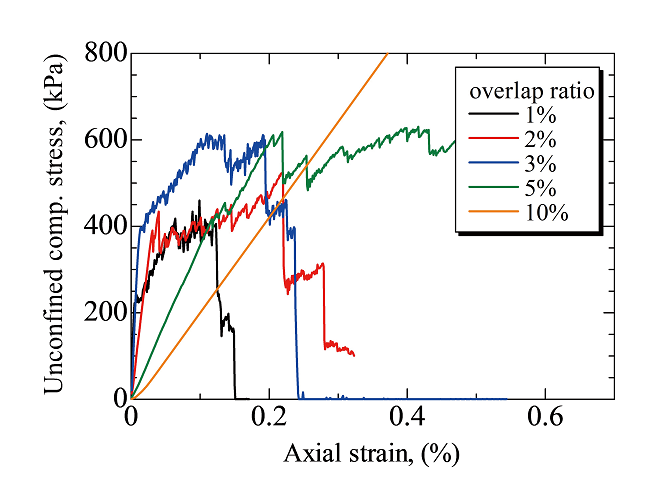Major Research 2C Research on Effective Use of Existing Infrastructure Facilities
Background and Objectives
There is strong demand to improve the functions of existing infrastructure to enable active, effective use. Requests include countermeasures against increasing logistics volume and larger ships and vessels, expansion of airport functions, and countermeasures against existing facilities which can no longer be used due to increased external forces and other reasons. In addition, regarding waste disposal sites at sea which accept industrial and non-industrial waste, there is societal demand to ensure highly effective use of the sites. On the other hand, it has become difficult to secure land for soil disposal sites which accept soil dredged from shipping routes. Accordingly, it is necessary to prolong the life of soil disposal sites.
Therefore, we will develop the following: techniques to improve the functions of existing infrastructure and to renew and efficiently change the applications of existing infrastructure; techniques to reduce or effectively utilize construction byproducts and other redundancy; and techniques to effectively utilize waste disposal sites at sea.
Research Topics
Research and development comprises the following three subthemes:
1.Research on techniques to improve or renew existing facilities
We have already conducted research and development on improving existing facilities including deepening existing quaywalls. However, such improvements were made using techniques for newly-built structures. Hereafter, we will investigate methods of evaluating ground characteristics, design methods, and geotechnical survey methods to improve and renew existing facilities. In such methods, the construction history, effects from neighboring structures, and other factors will be taken into account. We will also investigate ground evaluation methods and geotechnical information databases, both of which cover residual settlement and other phenomena, with the aim of long-term facility maintenance and management.
2.Research on effective use and techniques of treating construction byproducts
We will investigate the following techniques regarding dredged soil: improvement techniques to transform dredged soil into high-value added materials including composite soil, which provides habitats for benthic creatures, and solidified soil with high water permeability; and new volume reduction techniques. We will also investigate durability when solidified soil and slag composite soil are used in sea areas, the mechanical characteristics of composite ground materials containing various byproducts, crushable materials, and other contents, and methods of evaluating and managing the quality of these materials.
3.Research on management and utilization of waste disposal sites at sea
Regarding disposal sites at sea, technologies for seepage control works for site development have been progressed. However, research on post-construction utilization of such sites has not been conducted. Therefore, we will investigate the following which are necessary for utilization: foundations, construction methods, effects on impermeable layers, management methods of the internal water level at low cost, techniques to detoxify waste before land reclamation, and the medium- to long-term strength and elution characteristics of solidified soil.
Activities in FY 2017
Based on measurements of unequal settlement of reclaimed land, we estimated settlement as we did in FY2016. The coefficients of estimated settlement-curve for FY2016 and FY2017 almost converged.
By using an experimental system which reproduces a series of processes from a grout injection experiment to an shaking table test using geotechnical centrifuge, we conducted injection experiments based on the following assumption: in the ground, there are several layers with high fine contents, which result in poor permeability of the layers. Therefore, liquid chemicals cannot easily penetrate into the layers.
We aimed to investigate the long-term behavior of piles in soft cohesive soil. With this goal, we conducted model experiments and investigated numerical analysis methods. Consequently, through the numerical analyses, we were able to reproduce the behavior of a single pile in soft cohesive soil to some extent. Also, regarding improving construction methods for existing pile casting through soil improvement work between piles, we conducted centrifuge model tests regarding models of overall cross sections including not only pile casting but also front sheet piles. Moreover, we verified a modeling method based on numerical analysis of each part for application to actual cross sections.
We conducted a compression test of 3D printed specimens in which shapes and orientations of every particles used for a discrete element model were replicated. With the existing specimen manufacturing methods using 3D printing technique, there were effects of particle-to-particle cohesion. Therefore, we investigated a production method that is free from particle cohesion. Also, using gravel ground, we developed equipment to conduct on-site X-ray CT scanning of a core sampled from the original location at the same original location.
We investigated volume reduction technique of dredged soil to extend the life of disposal sites through experiment and analysis and conducted numerical analysis investigation regarding the effect of increasing the height of a levee on its stability by using the following parameters: the height of dredged soil, distance of a temporary bank from the bulkhead; structure/mechanical properties of temporary banks; and countermeasures for bulkhead bodies. In addition, we studied volume reduction due to seabed disturbance and found that the previously reported effects had been affected by turbulence at the time of sampling soil specimens. Therefore, the effects might be reduced to some extent.
We also summarized the results of pile-installation and pile-removal experiments at a waste site that had been filled with incinerated ash. We started to investigate an insolubilization of contaminants by cement improvement technique and investigated deterioration promotion methods to study the deterioration of solidification-treated soil and eluviation of contaminant. As a result, regarding high-earlystrength cement, we achieved homogeneous deterioration of the specimens by compulsory permeation.

We studied the effects of particle adhesion. DEM simulation results from uniaxial compression tests (particle overlap at the time of formation = higher overlap ratio indicates greater uniaxial compression force)



